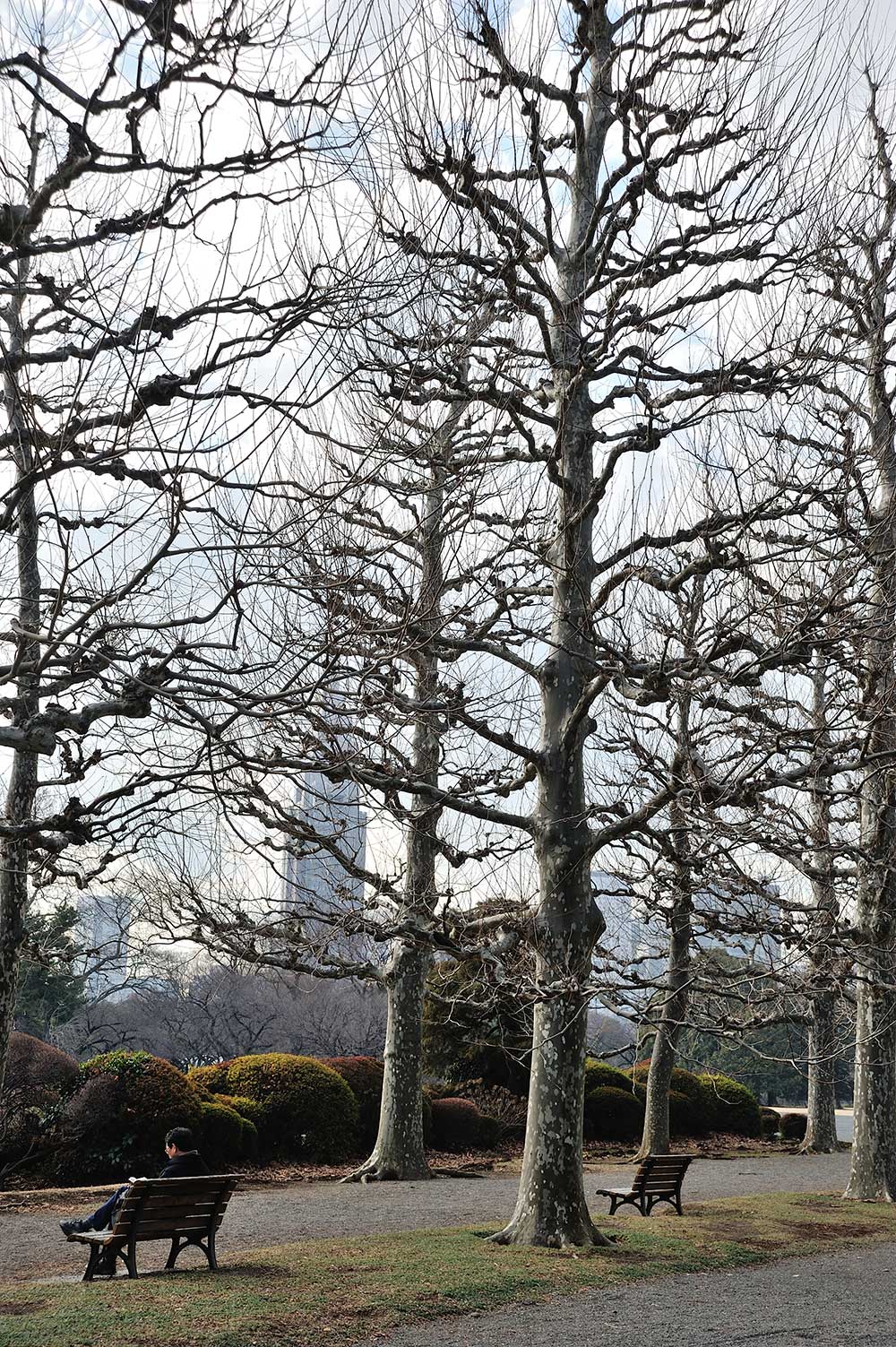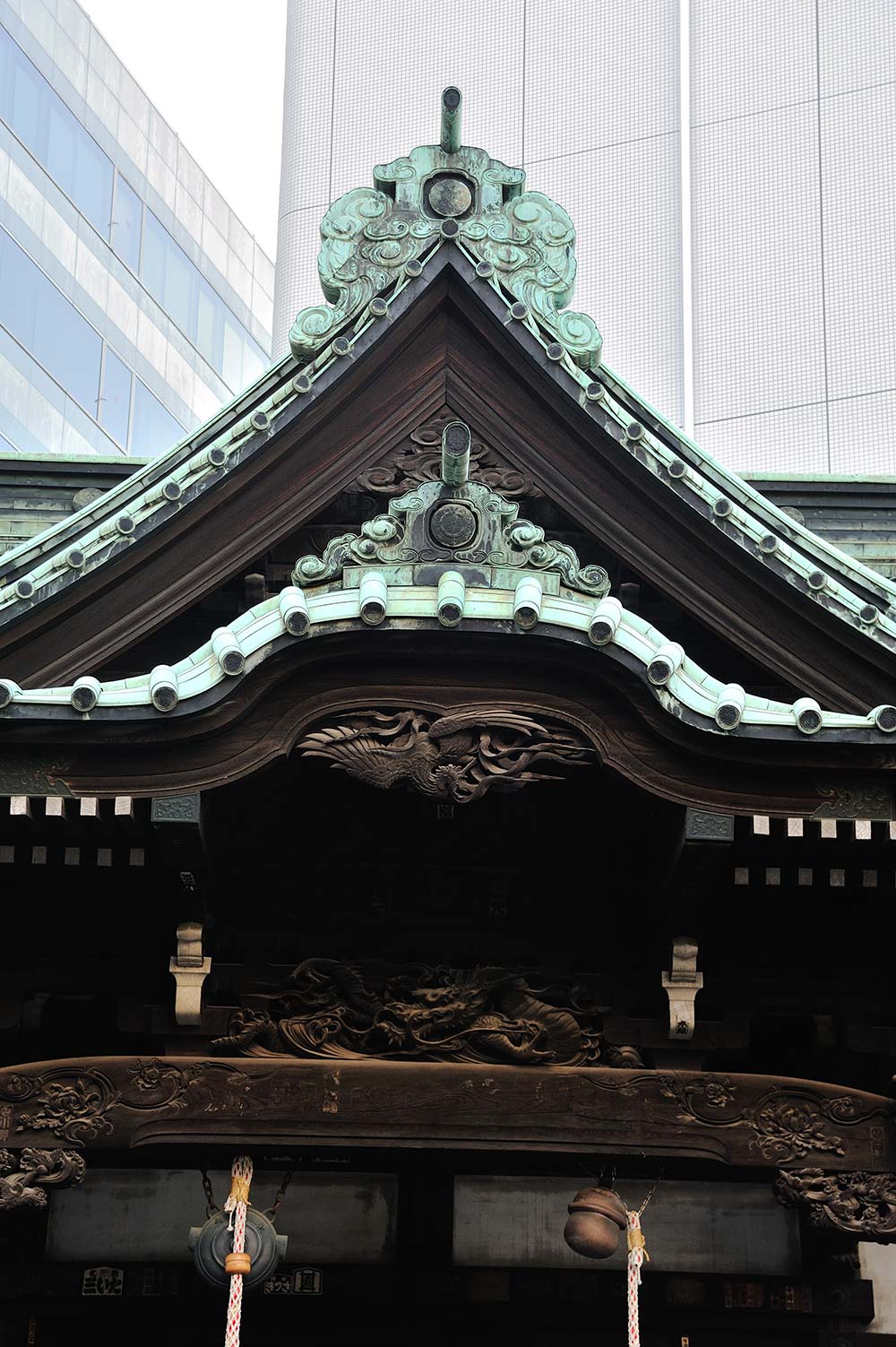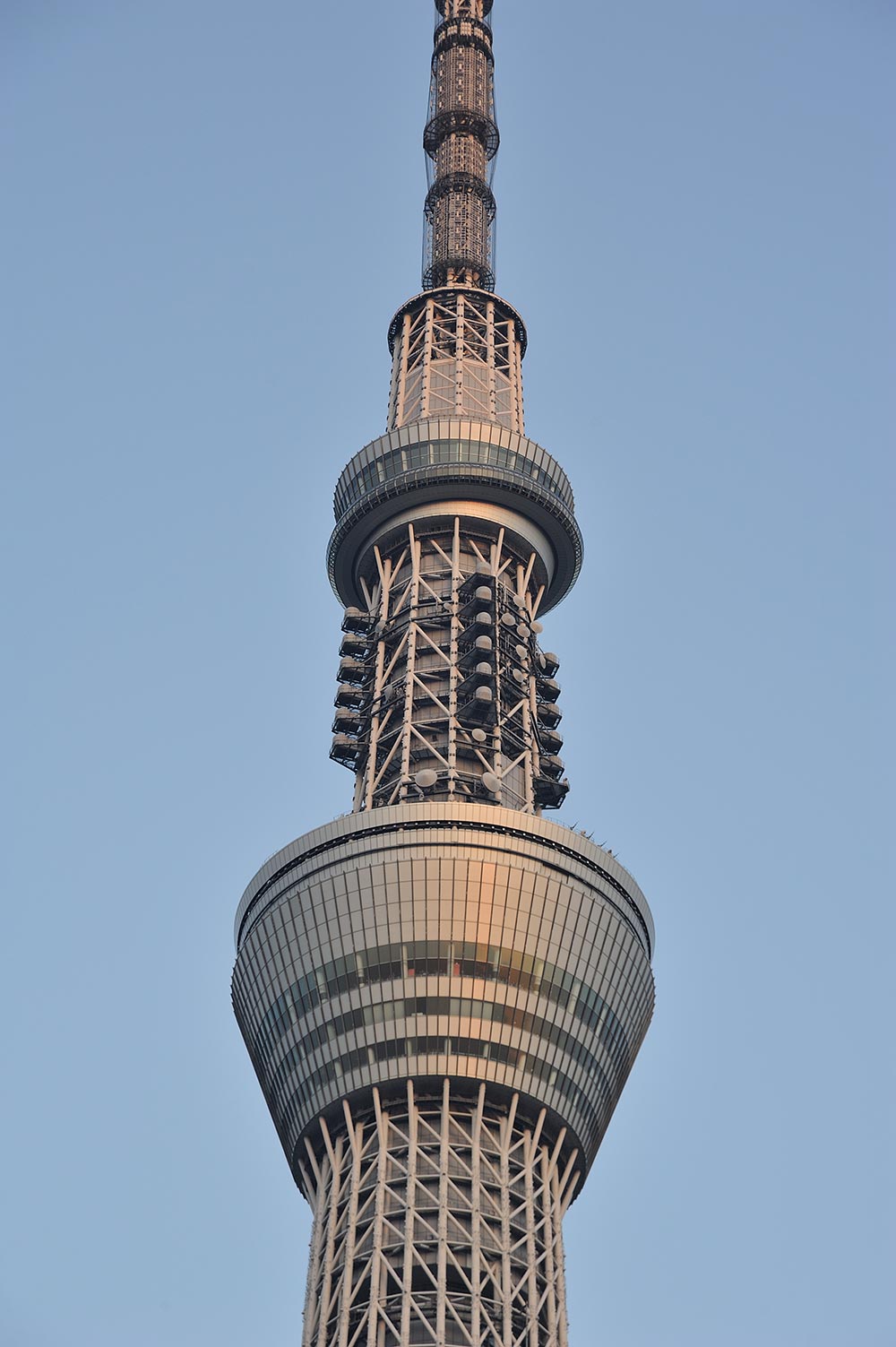NIKKOR - The Thousand and One Nights No.58

AI AF Zoom-Nikkor 24-120mm f/3.5-5.6D (IF)
This tale covers the AI AF Zoom-Nikkor 24-120mm f/3.5-5.6D (IF), a normal zoom lens with a high zoom ratio.
by Kouichi Ohshita
I. Demand for an almighty lens
The history of normal zoom lenses for still cameras can be characterized by a quest for an almighty zoom lens. The zoom ratios of Nikon's normal zoom lenses have increased over the years. We began with the 43-86mm zoom ratio of the Zoom-NIKKOR Auto 43-86mm f/3.5 introduced in Tale 4, and moved forward to the 35-105mm and 35-135mm zoom ratios until the 35-200mm f/3.5-4.5 lens introduced with Tale 47 was released in 1985. As the range of focal lengths covered increases, so do the scenes and situations in which the lens can be used.
Eventually, we get a lens that can be used with nearly any scene, and in almost any situation.
However, some sacrifices were made in order to achieve higher zoom ratios with early zoom lenses. One of those sacrifices was the closest focusing distance. The closest focusing distance for the 35-200mm lens is 1.6 m. While this is not generally a problem with telephoto shooting of distant subjects, it greatly restricts shooting possibilities with the lens at the wide-angle position. The closest vertical portrait shot possible at the 35mm position and a distance of 1.6 m, for example, would include the portrait subject's entire body. However, this did nothing to extinguish the passion of lens designers working to increase zoom ratios. Around the end of the 1980s, another manufacturer introduced a 28-200mm lens.
II. Demand for wider angles of view
Likewise, a major theme of the 1990s for designers was development of high-power zoom lenses. Naturally, Nikon was also planning a normal zoom lens that went beyond 35-135mm and 35-200mm. The person placed in charge of designing such a lens was my partner in this series, Mr. Haruo Sato.
Mr. Sato and I began working at Nikon at the same time. In those early days, we went out to take pictures and make the rounds of used camera shops together almost every week. We spent the time between projects verifying the performance of old Nikkor lenses with simulations, comparing shooting results and aberrations, and discussing all things related to optics and lens design. What's more, Mr. Wakimoto and Mr. Shimizu were still working at Nikon at that time. Mr. Sato often enjoyed listening to their tales of hardship and struggle in lens design, absorbing, more than any other, all of the knowledge and wisdom legends like these had to share. It is likely these experiences that served as the greatest inspiration for the NIKKOR The Thousand and One Nights series.
It seems that the original proposal Mr. Sato received from the planning department was for a 28-200mm lens that was smaller, yet offered greater performance. However, Mr. Sato had other specifications in mind. At that time, the NIKKOR lineup included a 24-50mm wide-angle zoom lens and a 28-85mm normal zoom lens. However, indications from professional press photographers were that the 24-50mm range did not offer sufficient telephoto capabilities, and that the 28-85mm range did not offer sufficient wide-angle capabilities. They asked if we could develop a lens that covered a range of focal lengths beginning at 24mm, but ending at a focal length higher than 50mm.
From his own experience, Mr. Sato knew that he wanted a lens that supported a wide-angle focal length of 24mm and one that supported a telephoto focal length of at least 100mm for capturing distant subjects to take with him when he traveled. He secretly mulled the idea of a single almighty lens that would meet all of his needs for travel photos.
He presented his idea to his boss, "I want to design a 24-120mm lens!" While it is true that this specification sacrifices zoom ratio, offering just 5x zoom as opposed to the 7.1x zoom a 28-200mm lens would offer, he thought that expanding the wide-angle focal length to 24mm would have more impact than expanding the telephoto focal length to 200mm. He also thought that we would see great demand from users. Mr. Sato begged his boss to allow him to design a lens beginning at the 24mm focal length.
Generally, when expanding zoom lens range, it is far more difficult to expand the wide-angle focal length than it is to expand the telephoto focal length. Mr. Sato's boss approved the request with the full understanding that a 24-120mm lens is far more difficult to design and develop than is a 28-200mm lens. "I see. Go ahead with your 24-120mm lens. However, if you do not find a way to achieve these specs within a reasonable time frame, I want you to go back to the 28-200mm specs of the original proposal."
This was how development of the 24-120mm lens began.
III. 24-120mm f/3.5-5.6

Figure 1 is a cross section of the 24-120mm lens Mr. Sato designed. The zoom type is a convex-concave-convex-convex (positive-negative-positive-positive) 4-group zoom structure.
Zoom lenses can be generally divided into two types. The first, like that shown above, is a positive-lead structure with which the first group is comprised entirely of convex lens elements. The second is a negative-lead structure with which the first group works as a concave lens. Positive-lead structures are advantageous in that they support high-power zoom, while negative-lead structures are better suited to wide-angle zoom. Mr. Sato's 24-120mm lens had the same basic zoom structure as the AI 35-200mm lens introduced with Tale 47, but with a number of measures implemented to overcome the wide-angle disadvantages of the positive-lead structure.
One of these measures was making the total length of the lens shorter. While this also helped to achieve the goal of making the lens smaller, the primary reason for this measure was that the total length of the lens had to be reduced so that light from the broad 24mm angle of view could be guided to the focal plane. Otherwise, the first and second groups would have to have been too large for a practical structure. From the standpoint of aberration compensation, however, the number of lens elements in each group must be increased accordingly as the angle of view is widened. Mr. Sato resolved this dilemma with two aspherical lens elements.
An aspherical lens element was adopted for the fourth lens element, primarily to compensate for distortion at wide-angle positions. As a result, Mr. Sato was able to prevent the increase in the number of lens elements needed for groups one and two. Adoption of an aspherical lens element for the 13th lens element helps to correct spherical aberration and coma generated by the fourth group. Ultimately, the structure of the fourth group was reduced from six elements in five subgroups with the 35-200mm lens to four elements in three subgroups. This is how Mr. Sato was able to reduce the total length of the lens while still correcting aberrations.
A second measure implemented to overcome the wide-angle disadvantages of the positive-lead structure was modification of the focusing mechanism. With most previous zoom lenses, focusing was performed by moving the first group forward. This means that, as explained in Tale 47, some compromise is required. Either the first group will be extremely large, or the closest focusing distance will be quite far. Such compromise would prevent the lens from being an "almighty lens", regardless of the zoom ratio achieved. This is where the focus cam comes in. With this 24-120mm lens, focusing is performed by moving the second group. Focusing by the second group is advantageous in that the amount of movement required of the focus group at the wide-angle position is extremely slight, and because a short closest focusing distance can be achieved without making the first group larger. However, as the amount of forward movement required at the wide-angle and telephoto positions at the same shooting distance differs greatly with focusing by the second group, the focus is off each time the focal length is changed with shooting at close distances. This can make using the lens a little awkward. This issue was overcome with adoption of a focus cam. It works with the zoom cam, compensating for the focus shift with shooting at close distances. The adoption of these two technologies-–aspherical lens elements and a focus cam-–helped to make the 24-120mm zoom range and a closest focusing distance of just 0.5 m possible.
The use of the latest technologies available at that time made it possible for Mr. Sato to achieve the almighty 24-120mm lens.
IV. Lens rendering
Now let's take a look at the rendering characteristics of this lens.
One of the major characteristics of this lens is that it has such a flat image plane. This means that, despite being a 5x zoom lens, no major failings can be found throughout the entire frame at any focal length, clearly showing that Mr. Sato felt that compensation for curvature of field and astigmatism should be a basic feature of photographic lenses. However, while resolution is good throughout the entire frame in the 35mm to 70mm range, coma can be seen, and contrast is a little low.
Although this makes for some interesting rendering, stopping down the aperture two stops is recommended to achieve sharp, high-contrast images that can actually be used. Another major characteristic of this lens is the distortion it exhibits. Just as with many other lenses, it exhibits barrel distortion at 24mm and pincushion distortion at 120mm. However, the least distortion is exhibited within the 28mm to 35mm range, and pincushion distortion is most visible at around 50mm. While this is one drawback to making the lens smaller, there were hardly any scenes with which distortion in actual shots was an issue.

D700, AI AF Zoom-Nikkor 24-120mm f/3.5-5.6D (IF); 24mm, f/11, ISO 200, [A] (aperture-priority auto), AWB
Processed with Capture NX-D

D700, AI AF Zoom-Nikkor 24-120mm f/3.5-5.6D (IF); 45mm, f/11, ISO 200, [A] (aperture-priority auto), AWB
Processed with Capture NX-D
Sample 1 is a wide-angle shot of the Tokyo Solamachi. The aperture was stopped down to f/11 to have a deep depth of field. This also helps achieve consistent rendering throughout the entire frame and hardly any noticeable flare around light sources. Rendering provides a sense of transparency.
Sample 2 is a shot of rows of plane trees captured at around 50mm. The image is extremely sharp because it was captured within the range of focal lengths offering the highest resolution. However, though the aperture was stopped down, some traces of coma can still be seen in the corners of the image. Despite the fact that this scene was somewhat backlit, it is a clear and sharp photo exhibiting no noticeable flare.

D700, AI AF Zoom-Nikkor 24-120mm f/3.5-5.6D (IF); 70mm, f/8, ISO 640, [A] (aperture-priority auto), AWB
Processed with Capture NX-D

D700, AI AF Zoom-Nikkor 24-120mm f/3.5-5.6D (IF); 120mm, f/10, ISO 200, [A] (aperture-priority auto), AWB
Processed with Capture NX-D
Sample 3 is a photo of Fudo-do Hall of Taiso-ji Temple in Naito-Shinjuku. It was captured at a focal length of around 70mm to 85mm. As the aperture was stopped down just one stop, the buildings in the background are not within the depth of field and slightly blurry, but the textures of the wood and carvings on the outside of the temple are very clearly expressed.
Sample 4 is a shot of the top of the Tokyo Skytree captured at the maximum telephoto position of 120mm. Despite the fact that this is a zoom lens covering a range of focal lengths beginning at just 24mm, the ability of this same lens to capture close-ups like this is one of its most attractive features. Just as Mr. Sato indicated, its specifications make it an excellent traveling partner.

D700, AI AF Zoom-Nikkor 24-120mm f/3.5-5.6D (IF); 45mm, f/6.3, ISO 200, [A] (aperture-priority auto), AWB
Processed with Capture NX-D

D700, AI AF Zoom-Nikkor 24-120mm f/3.5-5.6D (IF); 120mm, f/11, ISO 200, [A] (aperture-priority auto), AWB
Processed with Capture NX-D
One more feature of this lens is its short closest focusing distance. As the user can get as close as 0.5 m to their subject, regardless of the focal length used, this single lens can also be used for photographing small items, such as jewelry and accessories, as well as flowers.
Sample 5 is a shot of flowers captured at around 50mm. While reproduction of in-focus portions is good, the effects of coma can be seen in background blur with sharp edges at the bottoms of blurred portions. Because this is a zoom lens, it is very difficult to achieve good blur characteristics throughout the entire zoom range. However, since this lens was designed to offer pleasing blur characteristics in the 85mm to 120mm range, telephoto positions are the best option for images in which the user wants to utilize blur.
Finally, Sample 6 is a close-up of cyclamen flowers captured at 120mm. The shift from in-focus portions to blurred portions is natural, and even with backlighting, there is no flare and reproduction of tones is smooth.
This 24-120mm zoom lens that Mr. Sato developed met all expectations for an almighty lens capable of responding to a wide variety of scenes, making it one of Nikon's most popular lenses. Since the release of the original 24-120mm lens, several improvements have been made. In 2003, the lens was reborn as the AF-S VR Zoom NIKKOR 24-120mm f/3.5-5.6G with built-in Silent Wave Motor (SWM) and vibration reduction (VR) function. In 2010, the lens was made faster with a maximum aperture of f/4 effective throughout the entire zoom range to expand use even further. The result of this advance was the AF-S NIKKOR 24-120mm f/4G ED VR.
Though each of these successive lenses was designed by a different person, even the latest represents a continuation of Mr. Sato's ideas and intent. The passion of designers intent on creating almighty lenses will continue to bear fruit with new lenses in the future.

NIKKOR - The Thousand and One Nights
The history of Nikon cameras is also that of NIKKOR lenses. This serial story features fascinating tales of lens design and manufacture.

